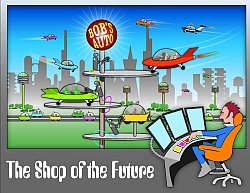 Contributed by Bob Chabot Contributed by Bob Chabot
ToolTech 2011
pinpoints future business opportunities
for ETI members
ToolTech Week 2011 — one of the Equipment
and Tool Institute’s (ETI) three annual core
events — focused on “Exploring the Shop of
the Future.” Like the individual threads
that makeup a tapestry, the nine
presentations made during the week provided
attendees with a stunning portrait of the
future — an insightful look not only at
where aftermarket service and repair
facilities are headed, but also what key
emerging trends will drive opportunity for
tool and equipment providers to the
aftermarket.
Nine presentations were shared by ETI’s
distinguished panel of speakers, each of
which is now available for viewing in full
at the ETI
website. These included:
- The Role of Society of Automotive
Engineers Service Support Policy Center
(Shuvo Bahattacharjee, Bosch ETAS Policy
Adviser).
- The SAE-OEM-ETI Initiative
(Bernie Carr, Bosch Diagnostics Senior
Product Development Manager).
- Global Diagnostics and Support
Services (Mark Saxonberg, Toyota Motor
Sales USA Service Technology Manager).
- Findings of the 2011 ETI Collision
Repair Research Project (Tim Morgan,
Elektron Inc. Managing Director, and Bob
Holland, Chief Automotive Technologies
Key Accounts Manager).
- Future Automotive Technologies — A
Tier 1 Supplier Perspective (Dave Hobbs,
Delphi Corp. Senior Trainer).
- Road map to the Future — A National
Provider’s Perspective (Bob Armstrong,
Bridgestone Retail Operations LLC
Automotive Equipment & Supplies
Manager).
- Realities of Fleet Service for Today
and Tomorrow (Mike Hasinec, Penske Truck
Leasing Vice President of Operations, ,
and Tom Kotenko, Snap-on Business
Solutions General Manager).
- Technologies and Standards Enabling
the Automotive Aftermarket (Nick
Cosimano, Carma Systems Inc. CEO, and
Chip Keen, Garage Operator Inc.
President).
- The Role of OEM Scan Tools in the
Aftermarket Shop of the Future (John
Jenkins, C.A.S. of New England CEO).
Takeaways you
can bank on
Change can be our friend, provided it’s
faced, prepared for and managed. “New
technology has permeated most aspects of our
businesses,” notes Mike Cable, outgoing ETI
President. “By staying on the cutting-edge
of new technologies and being vigilant about
pursuing the OEMs for information, ETI has
been able to bring our members the latest
data, insights and market research at events
like ToolTech.”
“It’s one thing to identify and resolve OE
information gaps for the aftermarket —
that’s the short-term fix,” added Charlie
Gorman, ETI Executive Manager. “But the more
thought that goes into the aftermarket
issues during the design, manufacture and
serviceability determinations of a vehicle,
then the less gaps there will be to begin
with. That’s the long-term fix that will
benefit everyone, from automaker to
technician to customer, be it brand
experience, service/repair competency of
business profitability.”
ToolTech’s presenters explained how this
could be done. While viewing the above
presentations online is informative, it is
the competitive edge provided by being
present in the discussion of the
presentations during question and answer
periods, the many networking events and the
trade show showcase that crystallizes
meaningful insights and “ah-ha” moments into
business opportunities. That’s why everyone
should consider going to ToolTech Week next
year, which will be held from April 17 - 19,
2012 in Palm Springs, Calif.
Each of the presenters delivered a
consistent message: The automotive
aftermarket “Shop of the Future” is bright,
provided the entire industry continues to
capitalize on improved communication,
cooperation and collaboration. For those who
were unable to attend ToolTech Week this
year, here are five key insights that can
truly impact your business.
Insight #1: An empowered automotive
aftermarket benefits everyone
Improving the working relationship between
the OEMs and end-user professionals who use
information and tooling to fix vehicles is
essential. For years, light-duty vehicle
OEMs have been required by the Clean Air Act
and the National Automotive Service Task
Force (NASTF) agreement to provide their
service information and factory scan tools
to the aftermarket for a reasonable price.
“In the past, OEMs seemed to ignore the
aftermarket because they do not think this
segment is important to their future — a
faulty business strategy then presumed their
customer brand experience ended when the
warranty expired,” explained Gorman. But
that has changed. “OEMs now realize that the
aftermarket is clearly an untapped gold mine
that could be very profitable to those OEMs
willing to pursue it through aftermarket
partnerships and cooperation.”
Consequently, aftermarket serviceability of
vehicles is now considered by OEMs
throughout a vehicle’s life cycle, beginning
with design and extending throughout
development, manufacturing and other
processes. Not only are costs reduced, OEMs
have discovered that the overall improvement
in brand experience translates to higher
customer retention when the next vehicle
purchase decision is at hand.
Bernie Carr (Bosch Diagnostics) echoed this
reality. “Improving vehicle serviceability
means both sides, OEMs and the aftermarket,
need to collaborate meaningfully. As tool
and equipment makers, we need to build stuff
that technicians want to use. For at the end
of the day, it is the aftermarket’s
technicians and service advisers who
customers identify as the real interface
when it comes to service/repair.”
Insight #2:
Open standards will tame rampaging
vehicle complexity
Trying to rein-in the vehicle electronic
revolution and burgeoning technological
complexity is like herding cats: Trying to
do it individually consumes too much time,
energy and cost. But collaborating to agree
upon and employ common open standards and
architecture offers a pathway for
streamlining the exchange of raw OEM data
into a common format that diagnostic scan
tool manufacturers can use to provide
improved, easier-to-use products to
service/repair professionals.
“Collaboration can benefit OEMs, Tier 1
suppliers and the independent aftermarket in
a number of ways,” stated Shuvo
Bahattacharjee (Bosch ETAS), standardizing a
format for data exchange between OEMs and
tool manufacturers could help simplify
vehicle diagnoses, enable key OEM
intellectual property to be protected,
improve the exchange of vehicle failure data
over longer cycles, foster the development
of new methods for prognostics and
predictive diagnostics and reduce
legislative-driven requirements. Each of
these would vastly improve the experiences
for technicians in the aftermarket as well
as customers experience.”
Improved communication and common open
standards could help reduce diagnostic
tester development costs, agreed Mr. Carr.
“There's lots of parametric data, in many
various forms, across many vehicle makes and
models, that requires a high effort to
effectively manage. Administering this data
creates a huge cost challenge for
businesses.”
It’s not just a one-way street. Mr. Carr
shared that aftermarket toolmakers also want
to partner with OEMs to standardize how tool
data streams and algorithms are
communicated. For the aftermarket, this
means lower tool development costs, easier
tool design and improved usability in the
future. “If OEM and tool companies could
create and utilize a ‘Generic Data Template’
(GDT) for scan tool data, then OEMs could
output their data in the GDT format so that
any toolmaker could extract and then
optimize functionality for their customers.”
Mr. Carr indicated that this kind of
collaboration and standardization could even
lead to “smart” devices (tablets, phones and
more) that could serve technicians as single
diagnostic and service platforms. Automakers
could deliver service information and
diagnostic scan tool software to technicians
— via apps, for instance — onto fewer, if
not just a single handheld tool. That the
most recent operating systems just launched
by Microsoft Corp. and Apple Computer Inc.
are both geared to mobile smart devices
further bolsters the infrastructure for this
potential future solution. “In fact, I know
of one automaker who is planning to do just
that in the very near future,” Mr. Carr
hinted.
Void of the confusion that learning how to
navigate proprietary websites and factory
scan tools creates, the potential for a
future with standardized apps, increased
technician productivity, sustained shop
profitability, and other benefits is very
possible. Imagine that, and one can envision
runaway technology being tamed in a easily
manageable fashion.
Insight #3:
Managing the future can remove the
fear of the future.
“Awareness, education and training are key
to being a successful shop in the future,”
Dave Hobbs (Delphi) cautioned. “I haven’t
seen a radical change like ‘hybridization’
since 1981 when the computer came on-board
on every vehicle.” He noted that just 15
percent of shops today are truly prepared
and ready to diagnose and work on hybrids.
“Shops and technicians are in for a really
rough ride if they don’t embrace and train
for hybridization and other inbound change
now.”
“Shop technicians also need re-flash
training and competent tooling,” Mr. Hobbs
continued. “Only 10 percent of shops I
survey use factory tools and just 5 percent
of shops own and use a J2534 re-flashing
interface tool.” As a result, many
independent aftermarket repair shops are
increasingly less productive today because
they have farmed out too many opportunities.
Making it worse — like a dinosaur sliding
downhill on ice — the refusal by these
collision and mechanical facilities to
recognize, embrace, adapt and prepare for
inbound market trends and opportunities will
seal their fate and preempt their
sustainable, profitable future.
Another looming challenge is that a
significant percentage (15 to 25 percent,
depending on the source) of the technician
population is about to retire in the next
five to 10 years,” explained Penske’s Mike
Hasinec. Other presenters echoed that
sentiment. “In addition, the younger
generation doesn’t see desirable career
opportunities and attractive incentives to
become a technician.”
With technology changing at a rapid pace,
the demand for future skill sets is shifting
from being mechanical in nature to a focus
on computer, electronic, diagnostic and
problem-solving competencies. Mr. Hasinec
suggested that the industry must cooperate
to strive for a new breed of technician by
enhancing and marketing the image of being a
technician, developing solid career paths,
requiring meaningful (not just time spent)
continuous education after hiring, moving
toward condition-based maintenance, creating
better safer and more amenable work
environments, and simplifying how technology
is applied.
Tom Kotenko (Snap-on Business Solutions)
pointed out that increasing electronic
complexity and more stringent regulation are
further complicating the heavy-duty market —
which is comprised of 50,000 fleet
maintenance, 13,000 independent and 3,000
dealerships facilities — experiences that
the light-duty market is familiar with. Idle
control, event data recorders and more
stringent emissions controls that take
effect in the 2013 model year are near-term
challenges that also create new market
opportunities for related tools and
equipment. “We’re on the cusp of
transforming the service/repair technician
base, but we need a whole new breed of
technician.”
Insight #4:
Improved service readiness is in
everyone's best interest
Improved communication and common standards
can also elevate vehicle service readiness
at aftermarket dealerships, independent
shops and other automotive businesses,
according to Mark Saxonberg (Toyota). “Let’s
define ‘Service Readiness’ as having
received the accurate service training,
service information, service tools and
service parts necessary to perform any
diagnosis, repair and/or adjustment that
might be required to support a product, in
advance of product arrival for maintenance,
diagnosis or repair.”
He then demonstrated Toyota’s “360°
Service Support” model that Toyota has
implemented. Essentially, Toyota views
itself as being in the business of selling
cars and the OE parts to fix them.
Everything else that Toyota does is meant to
support that model. With a compatible laptop
and a $55 two-day subscription, Mr.
Saxonberg showed that any automotive
facility can perform accurate diagnoses and
effect complete service or repairs — without
concern for where, when, what or who.
Mr. Saxonberg showed how improving
communication, employing open standard
J2534-interfaced diagnostics, providing
complete web-based service information via
low-cost, short-term subscriptions, and more
meaningful collaboration with Tier 1
suppliers, tool and equipment manufacturers
and the aftermarket has vastly improved
service readiness for everyone — dealer or
independent technicians. In the end, he
concluded, consumer brand experience is
maximized, which benefits everyone from
those who build cars through to those who
fix them to those who own them.
For doubters amongst other OEMs, Mr.
Saxonberg shared one more nugget. “One might
think that moving to open standards to lower
costs of OEM diagnostic tools and service
information might decrease revenue for the
automaker or tool manufacturers.” He
emphasized that the Toyota experience has
been quite the opposite. “Total revenues
from providing Web-based service information
and diagnostics through an aftermarket
J-2534 interface device have actually
increased. Aftermarket facilities are more
service-ready, technicians are able to
service and repair our vehicles and Toyota
customers keep buying our vehicles.” Bottom
line? Outstanding service support from OEMs
is profitable in more than just monetary
terms.
Insight #5:
We’re all in the same boat
Whether an independent, a dealership or
fleet facility, the angst regarding
serviceability represents shared
frustrations. Large-sized fleets may have
the muscle to get solutions, given their
size, but independent shops and dealers
share many of the same needs that, when
agglomerated, are similar in size and scope
to those of fleet networks. They just aren’t
as obvious.
“National fleet accounts need complete,
turnkey solutions from tool and equipment
providers who have a national distribution
and service presence as well as the
financial resources to support them,” Bob
Armstrong (Bridgestone Retail Operations)
asserted. “Tool and equipment solutions must
cover a large number of service outlets and
fit service for the wide range of vehicles
across a wide variety of technician
competencies. More importantly, solutions
must be easy to implement and use.
Consider Bridgestone LLC’s recent experience
regarding a tire pressure monitoring systems
(TPMS) tool purchasing decision for its
2,250 locations nationwide. “If our
facilities have to send out a vehicle for
TPMS, the dealer charges us anywhere from
$60 to $200 per.” The solution had to be
implemented uniformly and completely at
every outlet; the cost of that solution
multiplied by 2,250 locations is serious
coin. But that pales in comparison with
purchasing factory tools from each OEM for
each outlet.
Bridgestone therefore sought a generic
aftermarket solution. The company narrowed
its TPMS tool search down to three
aftermarket generic possibilities. However,
two of them involved a manual that exceeded
1,000 pages, given the wide range of
vehicles to be serviced. Bridgestone decided
to team the third technology company with an
information systems company, a partnership
that led to a compact synthesized 53-page
service booklet that its technicians could
more easily digest and use.
Here’s another example, one that involves
telematics. It always intrigues me when I
find examples of the automotive industry
catching up with the medical industry.
Following my personal experience with a
heart event and recovery at a local cardiac
rehab program, I have since learned to read
and interpret heart rhythm waveforms as a
volunteer (surprisingly similar to what
technicians do with automotive waveforms).
I’ve also learned much about cutting-edge
telematic and imaging technology used today
with cardiac patients.
LifeWatch Corp., for example, manufacturers
a wireless telematic heart monitor that
continuously monitors heart function 24/7.
It automatically detects intermittent or
regular problems and then sends relevant
data to a centralized monitoring call center
where certified cardiac technicians
interpret the data, make authorized fix
where possible and notifies physicians and
patients. This monitor, about the size of a
small cell phone, requires only minimal
patient intervention, significantly
increases diagnostic yield and leads to more
appropriate and certain therapy.
Let’s consider a similar application of this
concept to our industry. While some OEMs
have a diagnostic service like General
Motors Corp.’s On-Star telematic diagnostic
system, most don’t. Individual aftermarket
service/repair facilities definitely don’t.
Until now.
At ToolTech 2011, Carma Systems Inc.
demonstrated a prototype of its new
automotive wireless telematic monitor. The
palm-sized Carma device — which incorporates
a built-in GSM chip and processor — plugs
into the vehicle’s under-dash OBD II port,
then works on an exception-based
methodology, much like the LifeWatch heart
monitor. When an exception is found,
notification is sent to a centralized
information management provider who then
notifies the customer’s shop, so that an
automotive technician can contact the
customer to correct the problem when
possible, or advise the customer to make an
appointment. The company expects the device
to be available in the fourth quarter of
2011, at a price of approximately $120. Is
that a future you can grab hold of?
One last thing
Getting back to the standardization and
service readiness insights for a moment,
just think of the time and money that could
be saved, and better used elsewhere, if the
aftermarket and OEMs collaborated to develop
common solutions for diagnostic, telematic
and other futuristic capabilities. Our
ingrained past practices and archaic
mindsets often act to curb our progress to a
better future. Our rush to preserve legacy
solutions and thinking, let alone protect
any and everything we might consider
proprietary in nature and value, makes it
tougher than it has to be. After all, there
is risk in becoming stagnant.
It’s time to shed the ball and chain by
deciding what kind of future we really want
and then moving towards it, even if we have
to set aside some of our past. Events such
as ToolTech push us challenge our
preconceptions and entrenched positions.
Being able to rethink vehicle serviceability
today to better empower the shop of tomorrow
illustrates that our industry can change for
the good going forward. It’s really just a
matter of choice.
|
Are
You Ready For The Future?
The
vehicle electronic revolution is now a
reality that, like a compass, point
the way towards new business
opportunities for tool and equipment
manufacturers. Click on the image to
watch this seven-minute video to see
which trends are driving the future of
aftermarket service/repair and
collision facilities. (Video — Delphi
Corp)
Navigating
the Scan Tool Maze
John Jenkins, an automotive consultant and
founder of C.A.S. of New England, helps
aftermarket facilities make better-informed
scan tool purchase decisions. Jenkins
defines four types of scan tools. If buyers
knew which of the four broad categories
before buying a tool, the functional reality
of the tool would better fit their
expectations. Here are his
definitions:
- OEM (Factory) scan tools are the
current scan tools used in automakers’
franchised dealer service departments
(e.g. Ford IDS).
- Specialty scan tools focus on
particular car line (e.g. Ross-Tech VCDS
VW/Audi scan tool).
- Aftermarket scan tools are those scan
tool built for industry use that are not
a recognized OEM scan tool.
- OEM-level scan tools include any tool
that an aftermarket scan tool
manufacturer wishes to term as such.
It’s a marketing term.
Opportunity
Knocks: The Collision Sector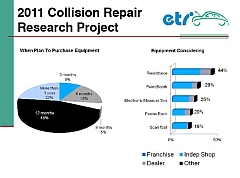
According to the findings of the recent 2001
ETI Collision Repair Research Project, the
top five growth opportunities for tool and
equipment providers in the collision sector,
based on collision facility purchase
intentions over the next 12 months, are
resistance welding equipment, paint booths,
electronic measuring systems, structural
frame racks, and diagnostic scan
tools. (Image — ETI Collision Group)
Opportunity
Knocks: Mechanical
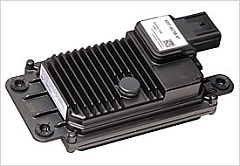
Delphi's
Multimode Electronically Scanning
Radar's compact packaging and
innovative technology are helping make
radar-based safety and convenience
systems more affordable in the
high-volume automotive market.
According to Delphi Corp. industry research,
the mechanical service/repair sector has
undergone a major shift, driven by
computerization, electrification,
alternative power-trains and safety.
Emerging opportunities for tool and
equipment providers include reprogramming
and re-flashing, as well as diesel, hybrid
and fuel cell technologies — many of which
didn’t exist 15 years ago. More are on their
way. (Image — Delphi Corp.)
Raise
the Service Readiness Bar
|
From
Toyota's TIS Website.
The
University of Toyota,
Technical and Body Service
Training Development
Department creates a variety
of instructional materials
used to develop the skills
and abilities of Toyota and
Lexus Technicians. Although
developed for use in our
comprehensive technician
training curriculum, the
following valuable technical
training materials are
available on-line in the TIS
library.
- New Model
e-Learning Modules
- Current
Core Training e-Learning
Modules
- Technician
Handbooks
- Toyota
Tech Online Magazine
For
additional training
opportunities, Toyota offers an
outstanding technician
development program for
individuals interested in an
automotive service career. For
more information on the Toyota
specific training accessible
through the Toyota Technical
Education Network (T-TEN) please
follow the link below. |
The shops and technicians that will thrive
in the future will invest in
"job-appropriate" service/repair resources —
information, tools and technical training —
to be fully service ready at an affordable
cost. (Text - Toyota Motors USA Inc.)
Are
You Ready for the Cars of Tomorrow?
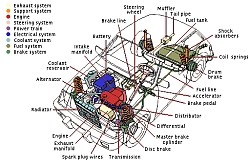 Just
think about how computerization,
electrification, multiplexing, safety and
other technological forces have changed the
thinking, techniques and tooling employed to
service or repair five year old cars, brand
new cars today and the cars we will see five
years from now. Time won’t stand still;
neither can the aftermarket. Just
think about how computerization,
electrification, multiplexing, safety and
other technological forces have changed the
thinking, techniques and tooling employed to
service or repair five year old cars, brand
new cars today and the cars we will see five
years from now. Time won’t stand still;
neither can the aftermarket.
24/7
OBD II Telematics for the Aftermarket
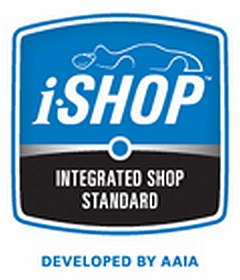
Carma Systems Inc.’s wireless OBD II
monitoring device is designed to be a
customer retention tool for aftermarket
service/repair facilities. It was first
demonstrated at AAPEX 2011, as part of the
iShop, the Automotive Aftermarket Industry
Association’s (AAIA) “Shop of Tomorrow”
initiative.
|



